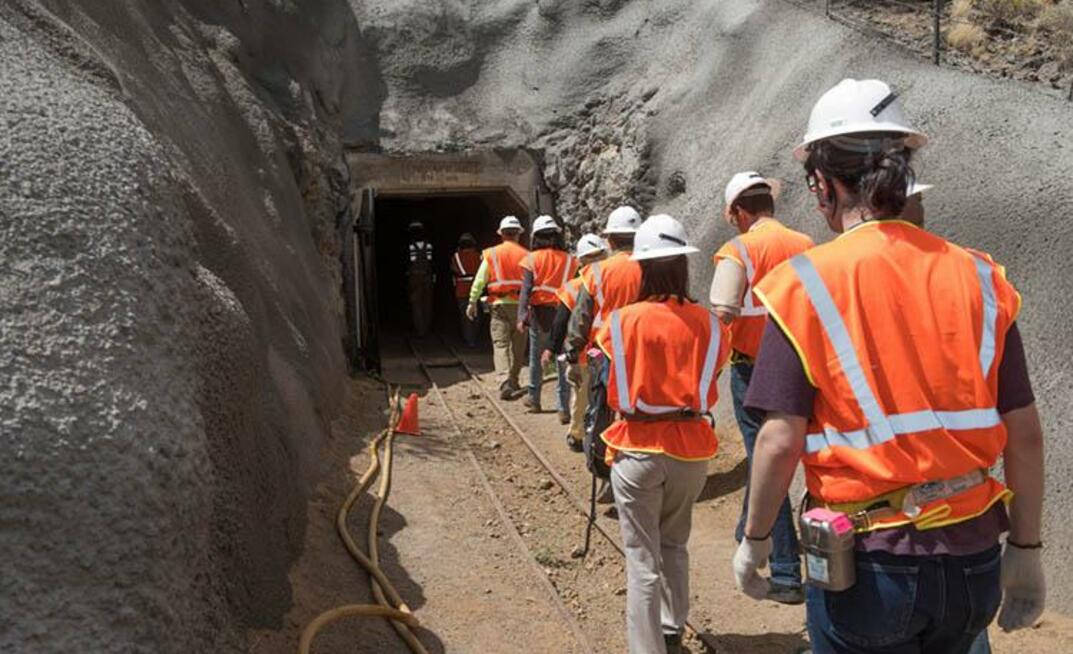One of the largest issues facing the mining industry is the fear that there just won't be enough people working in it as demand needs increase.
This is a global issue affecting all corners of the mining industry and all levels.
The gap across all sectors is widening due to demographic shifts – an aging population and a decreasing birth rate; a technological shift, whereby technology is creating a need for new skills; educational misalignment; and a lack of training and development, according to Meridith Elliot Powell, chief executive of MotionFirst, a recruiter.
Looking at a Springboard study at the start of the year, which polled industries across the US, more than 70% of corporate leaders have a talent gap in their organisation and the US Chamber of Commerce reports that there are only 71 employees for every 100 jobs.
YOU MIGHT ALSO LIKE
The analysis in the report was compiled using results from a survey of 1,031 US corporate professionals working at companies with at least 5,000 employees.
The issues facing all industries in attracting talent, specifically the shift in technology, is further compounded in mining as the rate of technological advancements increases as the amount of people coming into the industry drops off.
Mining companies have been battling unprecedented labour shortages amid a decade-long decline in graduates, as Mining Journal reported recently.
Negative perceptions of mining among members of Gen Z, who were born between 1997-2012, have contributed to this decline.
Polls back this up, with a 2022 Deloitte survey finding that 46% of Gen Zers and 34% of Millennials with jobs in mining or energy planned to leave those jobs within two years.
Meanwhile, a 2020 survey found that 70% of Canadians aged 15-30 would not consider careers in mining - ranking mining below even the oil & gas and construction sectors in terms of its appeal.
Pakistan
In developing economies, the scarcity of local talent can also mean that a developing project is left without a workforce. In Pakistan, for example, where substantial mining projects are underway, such as the Saindak copper and gold mine and Reko Diq, enrolments into mining degrees are at an all-time low.
"To tackle this challenge, a proactive approach to talent development is essential," Azeem Raza, associate professor of mining at UET Lahore, recently wrote on Linkedin.
"The industry grapples with an aging workforce, relying on apprenticeship programs and internal training. The evident shortage of graduates poses a potential crisis, further exacerbated by aging infrastructure, weak industry-academia partnerships, and retention issues," he added.
"Competitive compensation, innovative incentives, upskilling opportunities, and leadership development tailored to Gen Z's preferences are crucial elements to attract and retain young talent," Raza says.
Chile
In Chile the mining sector is so developed that it significantly contributes 13.6% to the GDP and attracts the bulk of foreign investment.
A study was released by CCM-Eleva in February this year which evaluated the industry workforce from 2023 to 2032. The study, which was done in conjunction with 27 mining companies and suppliers, covered 96% of the industry, and was sponsored by the Ministry of Mining.
The projected demand by the industry for 2032 is 34,009 workers. Of these, 80% corresponds to replacing workers who retire, and the remainder will be required to operate the portfolio of new greenfield and brownfield projects.
It is expected that at the end of the next decade (2023-2032) there will be an aggregate demand for 6,500 new workers as a result of the growth of the industry, lawyers at AX Legal surmised on reading the report.
The peak is projected for 2026, with an annual demand of 11,519 people in the main value chain. Of the new jobs created, 67% will be related to supplier companies in the sector.
The study found that in Chile, the global leader in copper extraction, was expected to have a surplus of trained geologists, mine extraction professionals and processing professionals, but had significant gaps in maintenance, electricians, fixed equipment operators and mechanical maintenance staff.
The employment of women into the Chilean mining industry is slow – women only surpassed 10% of the workforce after 2018 and reached 17% in both the supplier side and mining companies.
However, in 2022, when 55% of enrolments into Chilean higher education were women, mining related programmes had a count of 13% female participation.
Gender gaps, but analysis not always possible
Indeed, gender gaps persist in mining. A recent report by International Women in Mining (not to be confused with Women in Mining), released in January this year, looked into the top 100 mining companies as listed by Bloomberg. These had a total market capitalisation of $1.67T.
A global analysis of these is impossible, the body notes, as 35 companies didn't even carry data on its gender disaggregated workforce.
"We face a significant challenge – the lack of readily available, consistent, transparent and detailed gender disaggregated data in the mining industry," the report underlined.
However, it was able to ascertain that 15% of the companies polled (a workforce of around 780,000 people) were female, with the highest representation in Africa. This is in line with the Women and the Mine of the Future: Global Report released by the Intergovernmental Forum on Mining, Minerals, Metals and Sustainable Development (IGF) last year.
Australia wages pick up
In Australia, which has a robust and important mining industry, the talent gap and the lack of graduates coming into the sector has been well reported on.
This has led to intense competition to secure recent graduates by mining companies, according to a recent report published in the Australian Financial Review.
This found that newcomers into the industry can expect a six-figure salary, with Hays, a recruiter quoted in the AFR, saying a graduate mining engineer in Western Australia can expect an annual starting salary of A$105,000 to A$125,000, excluding benefits.
When fully qualified, graduates can quickly earn up to A$185,000, the article says.
Mine geologists are especially in demand, with salaries ranging between A$110,000 and A$130,000 in Western Australia and A$80,000 to A$100,000 in Queensland's hard-rock sector.
Technological shifts
Elsewhere, the Australian Resources & Energy Employer Association (AREEA) released a Megatrends report this week underlining the importance that technology will play in the sector, echoing one of Elliot Powell's point on barriers for workers.
"Megatrends ranging from generative AI to the energy transition are changing the world and the future of work," AREEA CEO Steve Knott said.
"They're driving innovation, investment and government incentives and regulation – and creating opportunities and challenges for the resources and energy industry," he added.
"Mining-related innovations of the Fourth Industrial Revolution include biomechanical exoskeletons, augmented reality-enabled maintenance, virtual reality training for high-risk scenarios, wearable sensors for measuring health and wellbeing, radio frequency identification (RFID) tag systems to automate reporting of malfunctioning equipment (and) collaborative robots for strenuous and repetitive tasks such as loading," Knott explained.
Of course, these advancements, much like those outlined in the Chilean labour skills report, will need specialist training.
Entry level falling
It does seem to be at the entry level that is the issue – the data supports the lexicon that there are just not enough graduates going into mining or mining services across the globe. In January this year, when Mining Journal spoke to Michael Scherb, Appian Capital -itself probably one of the most aggressive investors in the space – he said this was the case.
"We have a lot of good linkages with universities, and we take interns fresh and we train them but it's at your entry level [where there is an issue]. This generation is much more attracted by other industries, technology, other spaces they want to go into where people seem to forget that the base of everything is mining, literally," Scherb said.
"This is exciting space that feeds everything else afterwards. And there is a lack of talent coming into this space. So that's a real challenge," he added.
And its not just upstream that the issue persists – an article last week in the Guardian revealed that electric vehicles are routinely being written off after minor accidents in Australia, as there aren't enough mechanics qualified to fix them, nor are there the relevant spare parts needed.
Insurers are more likely to scrap EVs due to complications to do with the vehicles batteries ie: there aren't enough skilled professionals to fix them, according to the Motor Trades Association of Australia.


























